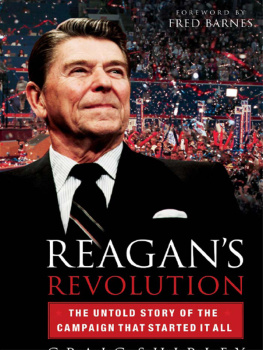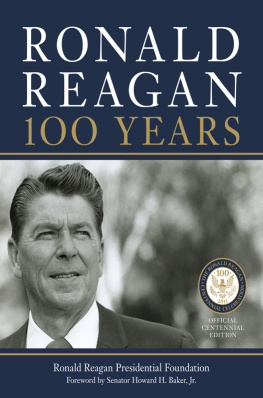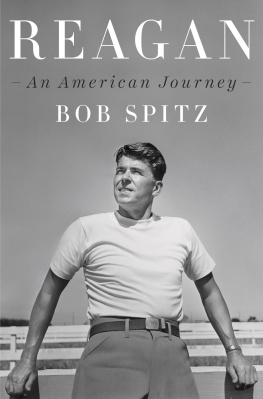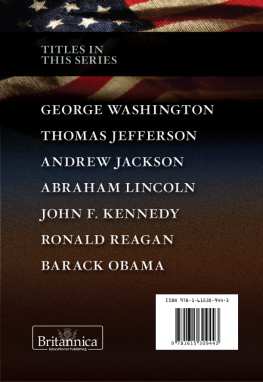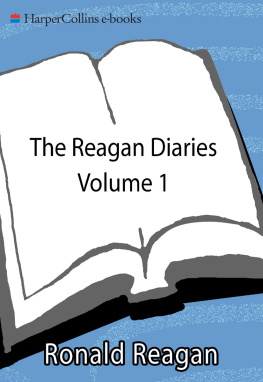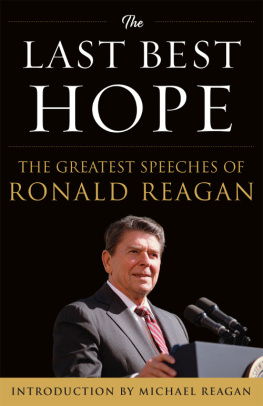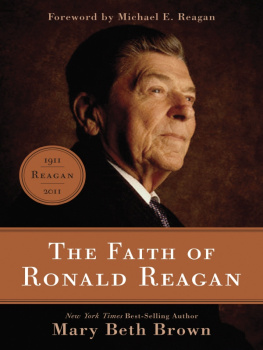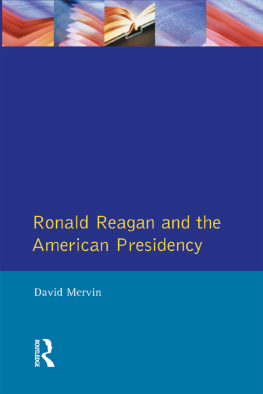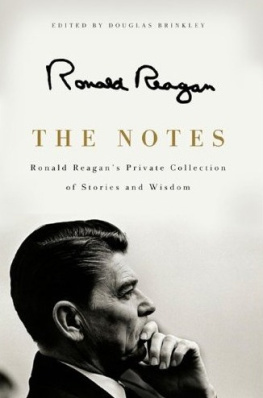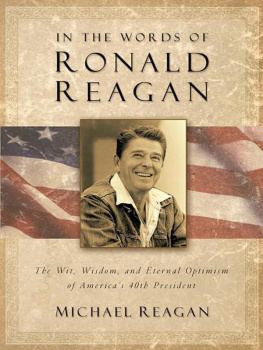Authors Note
T HIS BOOK BEGAN with my interest in the appeal Reagan had for the American public and the direct connection he made to the national imagination. Demonstrably Reagan did much to restore the national morale even while the achievements of his administration seemed elusive to many. To study his rhetoric and political persona is to learn much about this country, and in particular about the myths, traditions and stories that sustain us and color our thinking about the world. Star Wars, or the promise of a space-shield to protect the country against destruction by Soviet nuclear missiles, seemed to me to be the place to begin since it was surely his greatest rhetorical triumph. What other President, after all, could persuade the country of something that did not, and could not for the foreseeable future, exist?
Reagan was an unusual politician and a most unusual chief executive. In the kiss and tell books of the late 1980s and early 1990s former officials told stories about Reagans ignorance of policy issues, his disengagement from the work of the government, his distance from other people and so forth. These books, coming on top of the revelations of the Iran-contra affair, led many Americans to conclude that Reagan was an aging simpleton with a few strongly held ideas. But this is not what those books say, nor is it a conclusion that can be drawn from his life and career. Reagan puzzled me for a long time. A number of his close associates described him as living in a world of rhetoric, performance and perceptions. But it was years before I understood the extent to which this was the case.
The book opens with a chapter about Reagans success in tapping into the mother lode of the American civil religion, with its substrata in nineteenth-century American evangelical Protestantism. As Reagan demonstrated, the national mythology is no dull centrist amalgam but rather a sparkling collection of elements, which, if arrayed on a spectrum, could appeal to the political right, center or left. His range and suppleness as a politician came from his ability to move through that spectrum, combining and recombining the elements at will.
Still, the Star Wars phenomenon was clearly not just of his making, but a collective enterprise.
Reagans 1983 Star Wars speech surprised everyone in his administration except for a few White House aides. His call for an initiative to make ballistic missiles impotent and obsolete was initially ridiculed in Washington and apparently dismissed. Two years later, however, the administration launched a major research program in anti-missile technologies, the Strategic Defense Initiative. In congressional hearings senior Defense Department officials, distinguished scientists and strategic policy analysts argued about laser weapons and boost-phase defenses as if these weapons were about to jump off the assembly line. Television news programs showed animated renderings of space-weaponry destroying the entire Soviet ICBM fleet. In Geneva, U.S. arms control negotiators called upon the Soviets to agree to the deployment of anti-missile defenses and to the radical reduction, and eventual elimination, of nuclear arms.
How could this happen? How did Reagans unworldly idea get through the gauntlet of technical experts in the Pentagon, the administration and Congress? What did administration officials hope to achieve in the arms talks? And what of the Soviet reaction? Was it true, as some said, that the idea of Star Wars frightened the Soviets into ending the Cold War?
How the rhetoric of Star Wars came into being and how it played out in Washington and in U.S.Soviet negotiations as the Cold War came to an end is the main subject of this book. The quest for anti-missile weapons, however, continued after Reagan left office, and because in 1999 both the Clinton administration and Congress resolved to deploy a national missile defense system, I bring the quest up to date in an afterword.
Americans have always been skeptical of politicians and experts, but during the Cold War they trusted their government with national life and death. When it came to the Soviet Union, nuclear weapons and the balance of terror, they assumed their officials knew what they were doing and told them the truth. Yet to look back over the public record of the late 1970s and 1980s is to be struck by how little of what was said about these subjects had anything to do with reality. It is to enter a world of phantoms and mirages.
Reagan and his foreign policy advisers came into office on a wave of hyperbole about the Soviet threat designed to rally the American public to support a major military build-up. A number of Reagans advisers belonged to an ideological faction whose views had not been substantially represented in Washington since the 1950s. Like their counterparts in the domestic arena who proudly proclaimed that they had come to create a revolution in government, they were radicals, in the sense of going back to the roots, and their ambitions were high. Like their forebears in the Eisenhower years, they wanted to roll back the Soviet empire and win the Cold War. When they came into office, they conditioned their public statements, and often the official estimates, in regard to Soviet intentions and capabilities upon these ambitions. Essentially they were not much interested in the ins and outs of what was happening in Moscow.
By 1983 the newly empowered enthusiastsdominant in the administrationhad managed to upset the elaborate system of conventions developed over two decades by the U.S., its NATO allies and the Soviet Union. The conventions on arms control were never well understood by the public because they involved a set of abstractions and conditionals which few but the experts could keep any account of, and because they did not stop the arms race but permitted both sides to develop prodigious numbers of nuclear weapons and preposterous strategies to go with them. Reagan was at one with the public on this score. The conventions nonetheless served to allay tensions and keep the risk of a nuclear war at bay. In flouting them the enthusiasts managed to create the worst period of friction in U.S.Soviet relations since the Cuban missile crisis of 1962.



